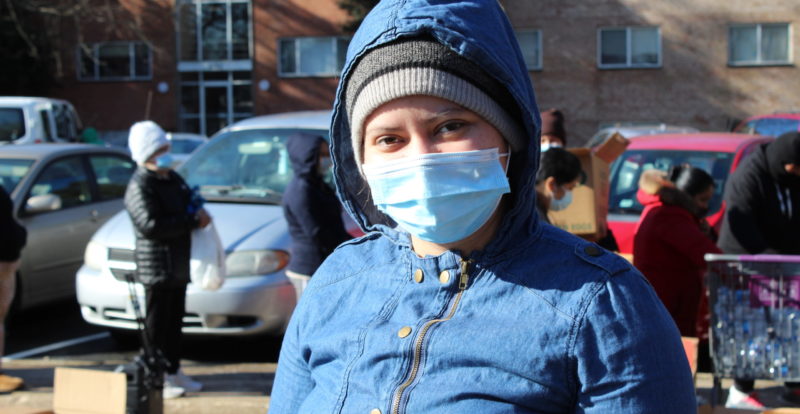One year after the first closures of the COVID-19 pandemic, many of us are looking forward to returning to normalcy in the months ahead. However, thousands of local families are still recovering from the financial losses they suffered during the initial lockdowns. And many people’s lives are still disrupted entirely.
The New York times took a look at how many Americans are now back at work full-time, compared to last April. Though many who were furloughed or laid-off early in the pandemic are now back at work, a disproportionate number of Hispanic and Black people, specifically Hispanic and Black women are still without work.
Over the last year, a record number of families have found themselves unable to afford enough food and have sought help from organizations like Food for Others. According to the Capital Area Food Bank’s 2020 Hunger Report, food insecurity in Fairfax County has more than doubled in the last year. Here is an overview of who is struggling with food insecurity in our community:
Communities of Color
Nationally, 1 in 4 Black households and 1 in 6 Hispanic/ Latino households are food insecure compared to 1 in 11 White households. In 2020, 37 percent of the clients served by Food for Others identified as Hispanic/ Latino. Many of our clients are recent immigrants who face additional challenges in finding jobs like language barriers or lack of transportation. These challenges can also make it difficult to obtain food, even from organizations like Food for Others.
Women
According to the Capital Area Food Bank’s 2020 Hunger Report, women are more likely to face food insecurity than men. This is especially true for single mothers who have to balance earning money with family caregiving. And, with schools online several days a week due to the pandemic, many women require additional help with childcare while they are at work. It’s common for food insecure women to report skipping meals so their children can eat. At Food for Others, about 60 percent of the clients we serve are women. We hope to ensure women do not have to sacrifice their own nutrition in order to feed their families.
Children
In Fairfax County, 1 in 13 children live in poverty. 28 percent of Fairfax County students rely on free and reduced-price school breakfast and lunch for their daily meals. Children are especially vulnerable to the worst effects of food insecurity. If children under age 3 do not get enough to eat, their growth and development is affected. Older children who are not getting enough to eat are more likely to get sick, feel fatigued, and develop anxiety. They are also unable to perform well in school— food insecurity is directly linked to lower test scores. It is also associated with anxiety, bullying, hyperactivity, and aggression.
Seniors
Seniors tend to be affected by food insecurity because: (1) many of them live on fixed incomes, (2) seniors may face unexpected healthcare expenses, and (3) seniors with reduced mobility may be unable to grocery shop or prepare food for themselves. Lack of enough food or enough nutritious food puts seniors at risk to develop severe health problems like congestive heart failure, asthma, and depression.
Food insecurity among seniors has also increased as a result of pandemic because many 65+ individuals are forced to choose between putting themselves at risk of contracting COVID-19 to obtain food or staying home without enough to eat.
College Students
It’s easy to assume that all college students have consistent access to food and plenty of financial support from their families but, in reality, it is not uncommon for college students to be facing food insecurity. A recent study showed that across the nation, 1 in 3 college students experienced food insecurity during the pandemic. Many college students have to balance attending classes and completing assignments with work, supporting children, or taking care of parents.
College food insecurity rates are highest among first generation students, single parents, disabled students, students of color, students suffering from housing instability and former foster youth. Students who are not getting enough to eat are much more likely to drop out.
The Capital Area Food Bank’s Hunger Heat Map shows that, in our region, one of the areas at high risk of food insecurity overlaps with George Mason University. To combat this problem, George Mason does operate a food pantry for students in need and is working to educate the community about food insecurity on college campuses.
As individuals who were most affected by the pandemic get back to work and rebuild their savings, Food for Others is here to ensure that they do not have to worry about whether they will be able to afford food. FFO hopes to promote food security for everyone in our region by working to improve food access, distributing fresh, healthy foods to those who need them, and collaborating with other organizations to ensure that the most vulnerable members of our community have basic needs like food, housing, and healthcare.

